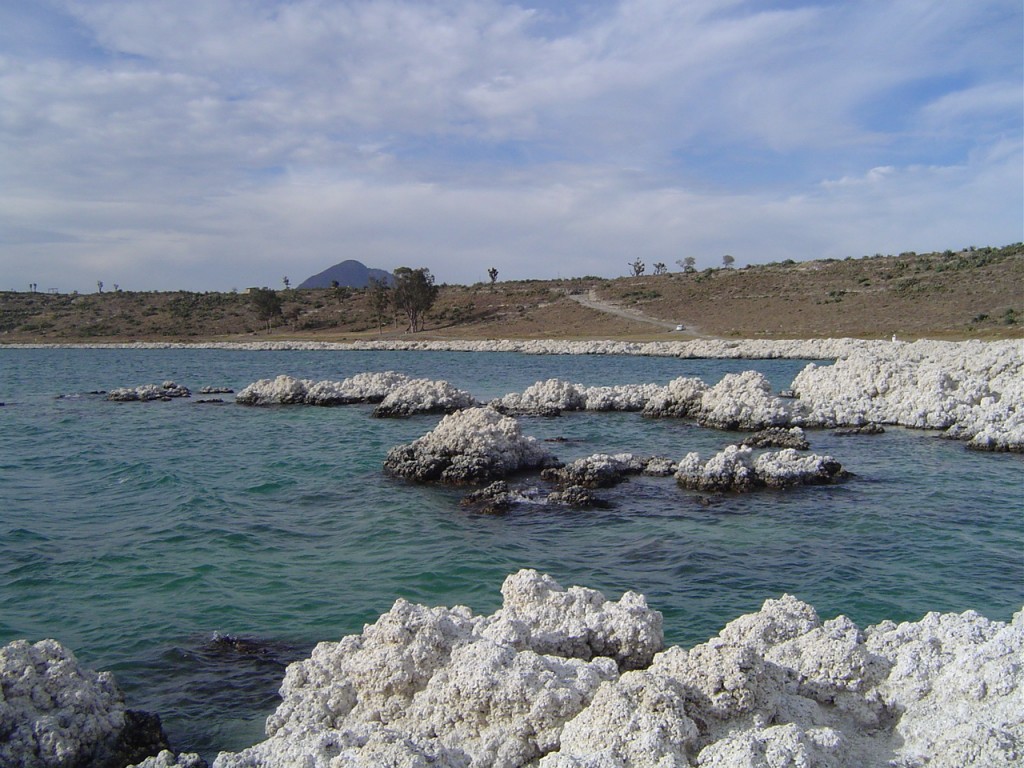
Four hours and 250km later, in Puebla State, we arrive at Laguna Alchichica, Alfredo’s field site. Set in a landscape that has turned from forest to semi desert over the last two centuries due to catastrophic and complete deforestation, the first thing that strikes one on first seeing Alchichica is its sudden blueness in a sea of dusty brown and yellow. The lake is nestled in the bottom of an extinct volcanic crater and so only becomes visible from the road at the last moment.
On getting out of the car, I’m met by the strangely incongruous smell of brine, which, combined with the rough, white cauliflower-like stromatolite rocks surrounding the lake, is weirdly maritime for a site 200km from the sea. Alchichica is unique in that by a quirk of its geology it is a brackish lake, with salinity nearly that of sea-water. These special conditions have led to the evolution of a completely unique ecosystem endemic only to the lake, including bacteria, a number of crustaceans, a plant, a fish and of course a salamander; Ambystoma taylori. This salamander is one of the few exceptions to the rule that amphibians are never found in salty water and as such it is evolutionarily unusual, as well as being listed as Critically Endangered by the IUCN. As such it is in joint 7th place on the EDGE list of amphibians. The unsustainable extraction of water in the region has caused the water level to drop 5 meters in recent decades and houses have now started to spill over the crater rim and right down to the water itself, which in places is choked with dumped litter. However, the lake is otherwise relatively intact and we found a large number of salamanders on our trapping and torch-lighting surveys.

©Christopher Michaels
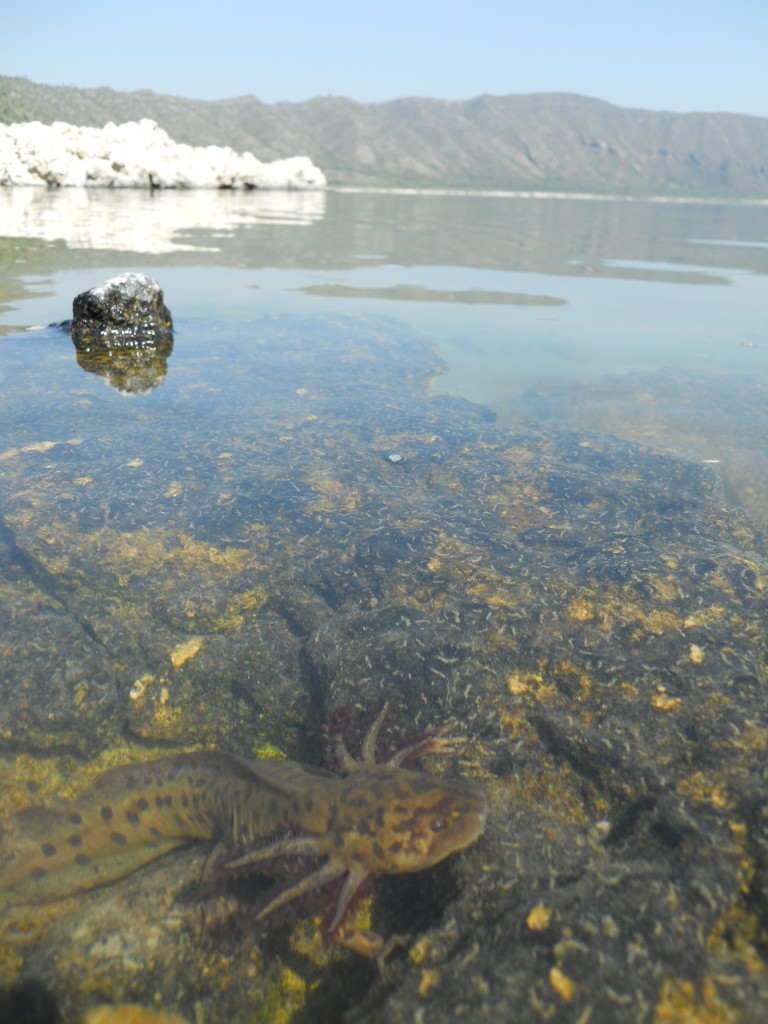
Alchichica is a one of a string of ‘Maar’ or ‘Crater’ lakes, the rest of which are freshwater. These other lakes are host to another Ambystoma, the Plateau salamander A. velasci. This species, which can metamorphose into a terrestrial salamander, was once common across the Pueblan plateau, but with deforestation and desertification came the loss of the seasonal ponds and pools in which it used to breed and its subsequent extinction over much of this region. Visiting some of these other lakes brings home the possible fate of Alchichica.
The worst of the three lakes we visited was Quechulac, where we find ourselves standing on a dry sandy bank that, thirty years ago, would have been five metres under the scummy surface. From this bank, the scent of raw sewage hangs over the litter-choked reed bed remnants while, a little further off, men drag-net the lake near to floating (and not at all escape-proof) cages of rainbow trout. The once forested volcano crater in which the lake sits has been cleared of almost all vegetation and the ensuing soil erosion has made all but one road into the crater entirely impassable while the rootstocks of remaining trees are exposed by nearly two metres. Years of overharvest from the lake for local consumption, degradation and pollution of its habitat brought the Plateau salamander population here to its knees. Finally introduction of predatory trout around 5 years ago meant that, according to a local restaurateur who once grilled the salamanders alive for the equivalent of 20 pence, there are no more salamanders here.
The other freshwater Maar lakes, with the exception of those inaccessible by car, are going down the same road with pressure on remaining salamander populations increasing every year. Driving along parched, pitted and cracked dirt roads in the poor community around Quechulac, we are startled by the lack of interest in the lake and the seemingly uncaring way in which it is treated despite its central place both in the landscape and the livelihood of the people.

©Christopher Michaels
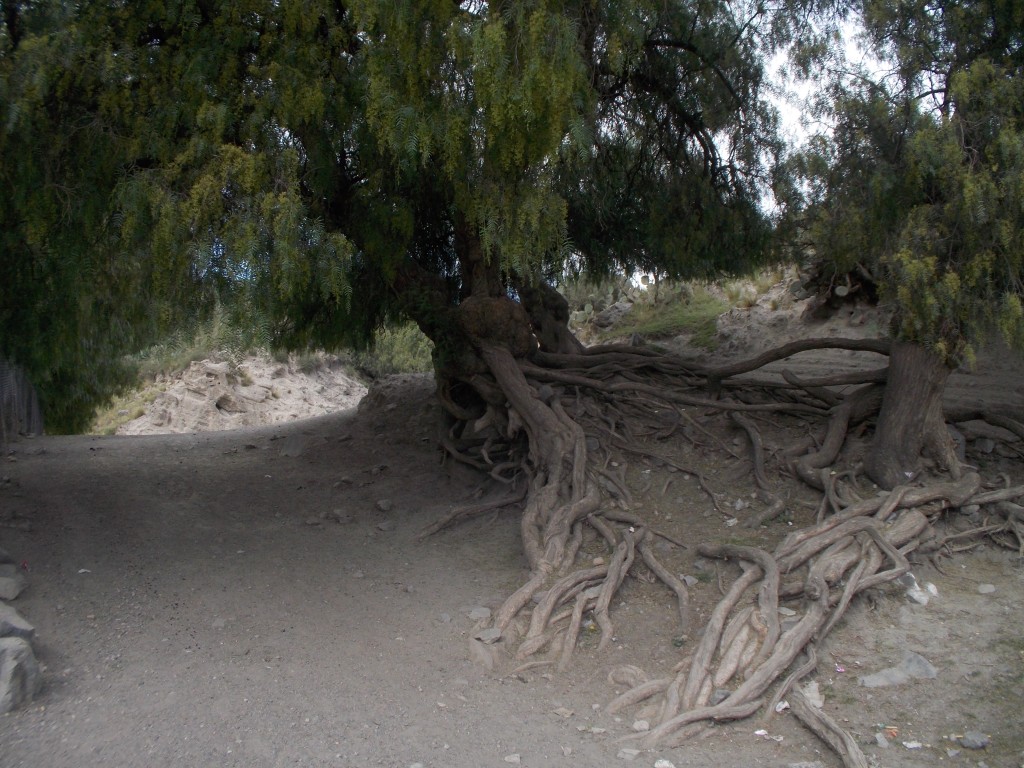
©Christopher Michaels
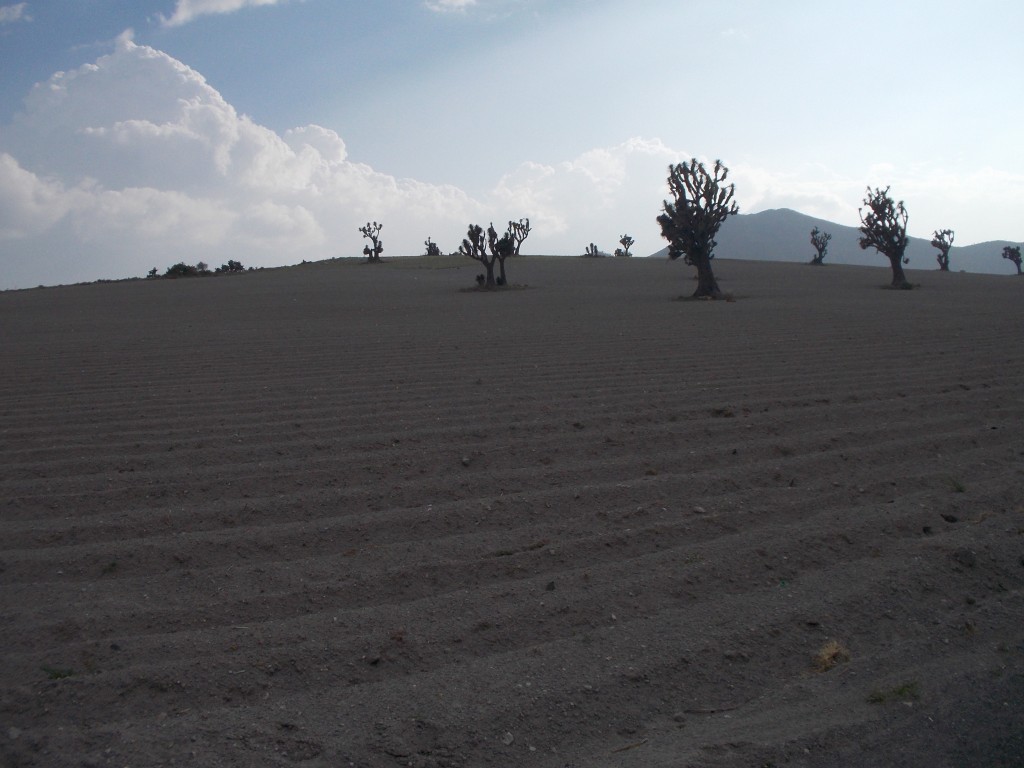
©Christopher Michaels
Visiting Quechulac brings the situation of Alchichica into some perspective. Yes, the lake has suffered desiccation and, yes, there is a large amount of refuse dumped in the water, but the lake is still in relatively good condition. There is no effluent being discharged into its water and the high salt content has killed carp and trout released into it. Most importantly, its proximity to the road means that the community living around the lake is more cosmopolitan and many families only arrived at the lake in the last two generations.
The difference in attitude between Alchichica and Quechulac is arresting. We are approached by a number of locals, interested as to what we are doing with our nets, rubber boat and GPS device. All are interested in protecting the lake and reveal that they have recently successfully petitioned the local authorities to stop illegal extraction of the water from the lake by tanker. Since this step was taken, the water level has increased for the first time in two decades, by about 30cm. During our visit, adults and children alike crowd in to see the salamanders we catch and to ask questions about them and the lake. One local man, a huge mechanic wearing dungarees and carrying a large spanner like it were chopstick (like some character from a film) is surprised and proud to learn that their salamander is different to everyone else’s and tells us that he frequently watches new videos of the salamander posted by divers on Youtube. Another young man, called Gabriel, tells us (in Spanish) “We love the lake, we want to conserve it, but we don’t know enough to do it properly” – surely the ideal position for a conservationist to find themselves in!
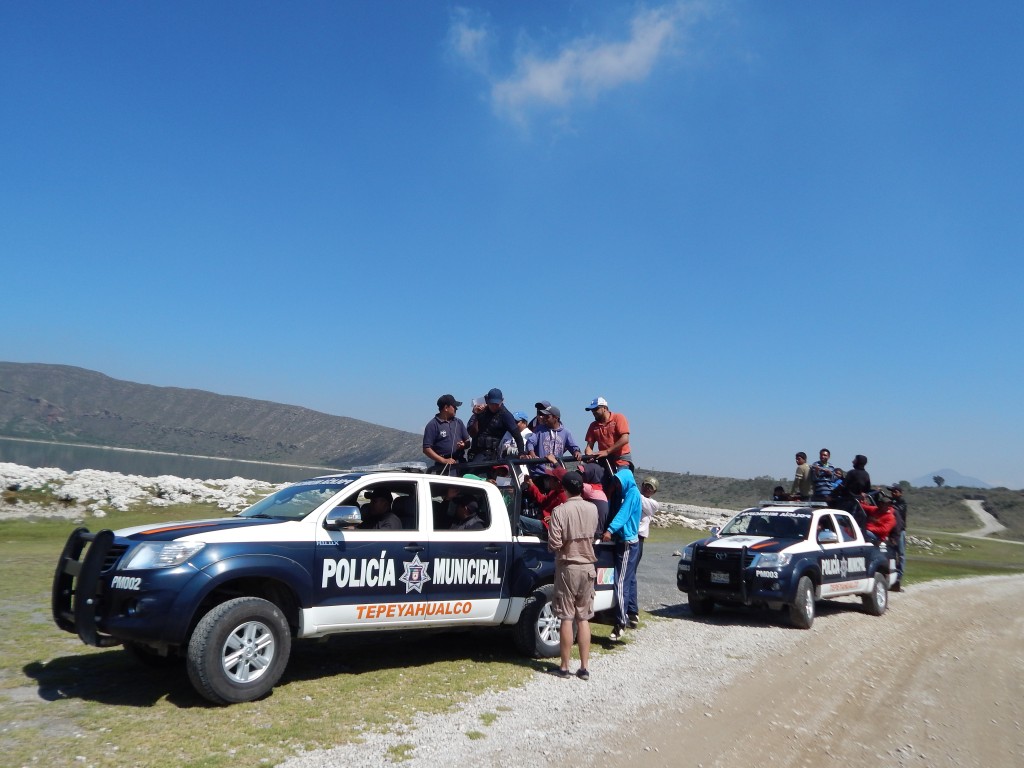
©Christopher Michaels
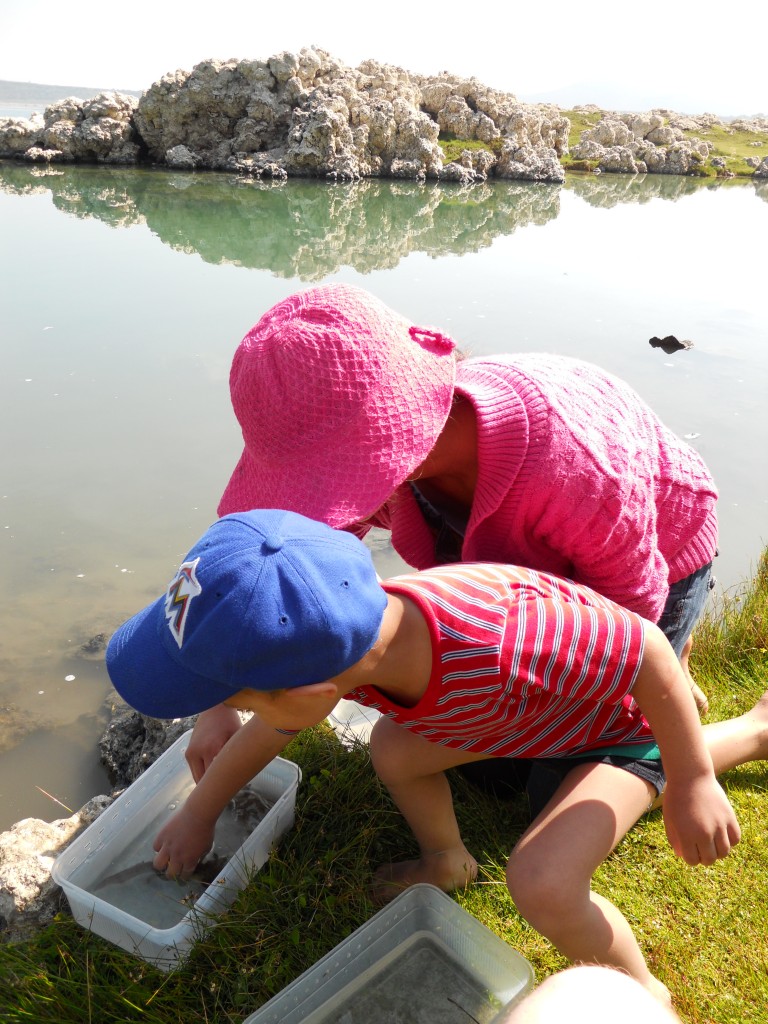
©Christopher Michaels
Alfredo’s irrepressible energy and optimism is infectious, and he has already garnered the help of the local mayor, who, aided by the local community, provides man-power and infrastructure to regularly remove litter from the lake. The community removes everything from drinks bottles to car tyres and in the event we took part in, we removed three pick-up trucks’ worth of litter. By empowering Alfredo to act as a conservation catalyst, the EDGE programme has kindled some hope that Alchichica and its salamander may be saved for future generations.
As we drive along the edge of Alchichica ready to lay our salamander traps one evening, I ask him if he think there will still be salamanders in the lake in fifty years. He catches my eye in the rear-view mirror; “Yes” he says with absolute certainty, “It’s my duty”.
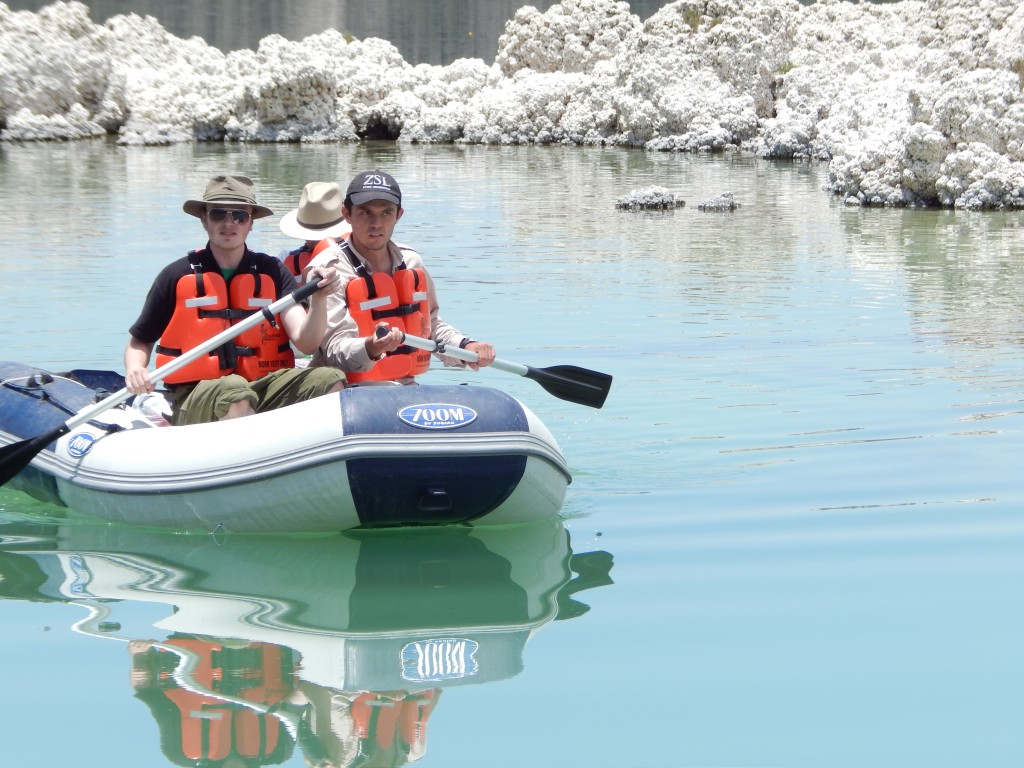
Also see: